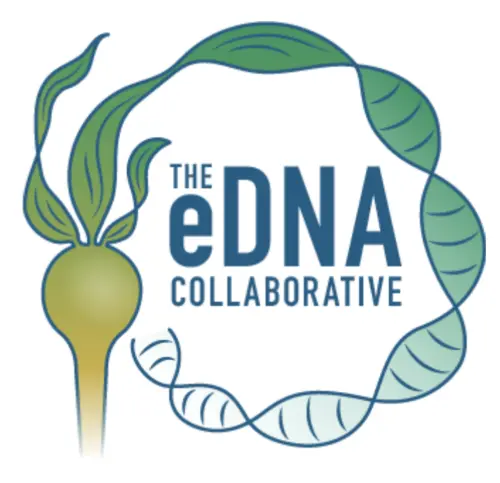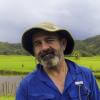As global biodiversity faces unprecedented threats, conservationists are turning to innovative tools to monitor and protect species more efficiently. Environmental DNA (eDNA) is revolutionizing biodiversity assessment by enabling the detection of life across the entire biological spectrum—from microbes to megafauna—without the need for direct observation. By analyzing DNA traces shed by organisms into their environment, eDNA provides a powerful, non-invasive method to assess entire ecosystems, revealing the presence of species that might otherwise go undetected.
The applications of eDNA extend across diverse ecosystems, from freshwater rivers to deep oceans, tropical forests to arid landscapes. By offering high-resolution insights into species presence and community composition, eDNA is transforming ecological research and conservation practice. Advances in DNA sequencing, bioinformatics, and statistical modeling continue to refine the accuracy and applicability of this approach, making it an increasingly essential tool in conservation science.
However, like any emerging technology, eDNA has its challenges. Sample contamination, detection errors, and the need for rigorous validation require careful consideration. Additionally, translating eDNA findings into actionable conservation outcomes demands collaboration among researchers, policymakers, and local communities. Understanding the strengths and limitations of eDNA is crucial for its effective implementation in biodiversity monitoring and management.
Why take this course
- Discover how environmental DNA revolutionizes biodiversity monitoring by detecting species without direct observation
- Learn practical techniques to collect, analyze and interpret eDNA data for conservation
- Develop skills that are increasingly valued in conservation, research, and environmental management
- Connect with emerging technologies that are changing how we understand and protect ecosystems
What you will learn
- Fundamentals of eDNA: what it is, how it works, and when to use it
- Field methods for collecting water, soil, air and vegetation swab samples for eDNA analysis
- Basics of statistical analysis for eDNA metabarcoding data, including visualization techniques, estimating detection probabilities, and determining statistical power
- How to interpret results and apply findings to conservation challenges
- Case studies of successful eDNA applications across diverse ecosystems
Before you start
- No previous experience with environmental DNA or molecular techniques is required - we will start with the basics and build your knowledge step by step.
- A basic understanding of ecology and conservation biology is helpful but not mandatory - key concepts will be explained throughout the course.
- Some lessons will include data analysis applications using R code. Basic familiarity with R and RStudio will be helpful but is not necessary, as we'll provide step-by-step guidance for all computational exercises.
To get a glimpse of how eDNA is transforming conservation, start by watching this short video introduction:
Lessons Outline
This course provides a practical foundation in environmental DNA (eDNA) monitoring techniques for conservation practitioners and researchers. It consists of seven core lessons covering the entire eDNA workflow — from determining if eDNA is the right tool for your project to analyzing and interpreting data.
The lessons are designed to build your understanding step by step:
- Conceptual Foundations – The first two lessons introduce eDNA, its applications, and whether it suits your monitoring needs.
- Study Design & Fieldwork – In the next three lessons, you will learn how to plan an eDNA study, choose sampling methods, and develop a robust sampling strategy.
- Data Processing & Analysis – The final two lessons focus on transforming raw eDNA sequences into meaningful ecological insights, with hands-on data analysis exercises.
Additional Resources Beyond the core lessons, this course includes an Additional Resources section with key literature recommendations and a curated list of leading eDNA research groups and laboratories.
By the end of the course, you will have the knowledge and practical skills to effectively implement eDNA in biodiversity monitoring, from initial study design to data interpretation.
Discussion
Use this space to ask questions, discuss with fellow participants, or share your thoughts after course completion.
Participants
Below are the WILDLABS members who have enrolled in and completed this course.

I am a Conservationist and Ornithologist passionate about biodiversity conservation and environmental sustainability.

PhD student in USP/Brazil


You either take care of nature or atleast look like you are...

Spatial ecologist focused on landscape ecology and spatial modeling of biodiversity

Zoologist, Ecologist, Herpetologist, Conservation Biologist


An early career researcher and conservationist who works to ensure a peaceful coexistance between nature and humanity

Software developer and wildlife ecologist

I am a Wildlife Veterinarian at SMACON, with interest in wildlife conservation, research, public health, animal breeding and genetics. I have contributed to several research initiatives, including an NSF-funded disease ecology project.

I am a Postdoctoral Researcher at the Ecosystem Health Lab @ Natural History Museum, London
Further Reading
Foundational Literature: eDNA Theory and Applications
- Taberlet, P., Coissac, E., Hajibabaei, M., & Rieseberg, L. H. (2012). Environmental DNA. Molecular Ecology, 21(8), 1789-1793. This paper discusses the potential of environmental DNA (eDNA) for biodiversity monitoring and its applications in ecology.
- Bohmann, K., Evans, A., Gilbert, M. T. P., Carvalho, G. R., Creer, S., Knapp, M., Yu, D. W., & de Bruyn, M. (2014). Environmental DNA for wildlife biology and biodiversity monitoring. Trends in Ecology & Evolution, 29(6), 358-367. This review highlights the use of eDNA in wildlife biology and its advantages over traditional monitoring methods.
- Deiner, K., Bik, H. M., Mächler, E., Seymour, M., Lacoursière-Roussel, A., Altermatt, F., Creer, S., Bista, I., Lodge, D. M., de Vere, N., Pfrender, M. E., & Bernatchez, L. (2017). Environmental DNA metabarcoding: Transforming how we survey animal and plant communities. Molecular Ecology, 26(21), 5872-5895. This article explores how eDNA metabarcoding is revolutionizing biodiversity surveys.
- Pawlowski, J., Kelly-Quinn, M., Altermatt, F., Apothéloz-Perret-Gentil, L., Beja, P., Boggero, A., Borja, A., Bouchez, A., Cordier, T., Domaizon, I., Feio, M. J., Filipe, A. F., Fornaroli, R., Graf, W., Herder, J., van der Hoorn, B., Iwan Jones, J., Sagova-Mareckova, M., Moritz, C., ... Kahlert, M. (2018). The future of biotic indices in the ecogenomic era: Integrating (e)DNA metabarcoding in biological assessment of aquatic ecosystems. Science of The Total Environment, 637-638, 1295-1310. This paper discusses integrating eDNA metabarcoding into biological assessments of aquatic ecosystems.
Terrestrial eDNA Applications
- Leempoel, K., Hebert, T., & Hadly, E. A. (2020). A comparison of eDNA to camera trapping for assessment of terrestrial mammal diversity. Proceedings of the Royal Society B: Biological Sciences, 287(1918), 20192353. This study compares the effectiveness of eDNA and camera trapping in assessing terrestrial mammal diversity.
- Lyet, A., Pellissier, L., Valentini, A., Dejean, T., Hehmeyer, A., & Naidoo, R. (2021). eDNA sampled from stream networks correlates with camera trap detection rates of terrestrial mammals. Scientific Reports, 11(1), 11362. This research demonstrates that eDNA from stream networks correlates with camera trap detection rates of terrestrial mammals.
- Sales, N. G., McKenzie, M. B., Drake, J., Harper, L. R., Browett, S. S., Coscia, I., Wangensteen, O. S., Baillie, C., Bryce, E., Dawson, D. A., Ochu, E., Hänfling, B., Handley, L. L., Mariani, S., Lambin, X., Sutherland, C., & McDevitt, A. D. (2020). Fishing for mammals: Landscape-level monitoring of terrestrial and semi-aquatic communities using eDNA from riverine systems. Journal of Applied Ecology, 57(4), 707-716. This study showcases the use of eDNA from riverine systems for monitoring terrestrial and semi-aquatic mammal communities.
- Van Leeuwen, P., & Michaux, J. (2023). Using eDNA for mammal inventories still needs naturalist expertise, a meta-analysis. Ecology and Evolution, 13(12), e10788. This meta-analysis examines the complementary role of traditional naturalist expertise alongside eDNA techniques for comprehensive mammal inventory studies.
- Newton, J. P., Allentoft, M. E., Bateman, P. W., van der Heyde, M., & Nevill, P. (2025). Targeting Terrestrial Vertebrates With eDNA: Trends, Perspectives, and Considerations for Sampling. Environmental DNA, 7(1), e70056. This paper reviews methodological approaches for detecting terrestrial vertebrates using environmental DNA sampling techniques.
Statistical Approaches for eDNA Data
- Dorazio, R. M., & Erickson, R. A. (2018). ednaoccupancy: An R package for multiscale occupancy modelling of environmental DNA data. Molecular Ecology Resources, 18(2), 368-380. This paper introduces an R package for multiscale occupancy modeling of eDNA data.
- Carraro, L., & Altermatt, F. (2024). eDITH: An R package to project eDNA-based biodiversity along dendritic river networks. Methods in Ecology and Evolution, 15(2), 415-424. This article presents an R package designed to project eDNA-based biodiversity along river networks.
- Chen, W., & Ficetola, G. F. (2019). Conditionally autoregressive models improve occupancy analyses of autocorrelated data: An example with environmental DNA. Molecular Ecology Resources, 19(1), 163-175. This study discusses the improvement of occupancy analyses using conditionally autoregressive models with eDNA data.
- Hleap, J. S., Littlefair, J. E., Steinke, D., Hebert, P. D. N., & Cristescu, M. E. (2021). Assessment of current taxonomic assignment strategies for metabarcoding eukaryotes. Molecular Ecology Resources, 21(7), 2190-2203. This research assesses current taxonomic assignment strategies for metabarcoding eukaryotes.
Research Groups & Laboratories
Argaly (France)
- Focus: Biodiversity assessment using eDNA, ecological surveys, and environmental genomics services.
- Website: https://www.argaly.fr
- Notable Contributions: Commercial biodiversity assessment and innovative eDNA sampling techniques.
Ecosystems and Landscape Evolution Group (ETH Zurich, Switzerland)
- Focus: eDNA approaches to monitor biodiversity, ecological modeling, biogeography, and landscape ecology.
- Key researchers: Loïc Pellissier, Antoine Guisan
- Website: https://ele.ethz.ch
- Notable contributions: Integration of eDNA data with spatial biodiversity modeling.
CALeDNA (University of California, USA)
- Focus: Community science-driven eDNA monitoring for biodiversity across diverse ecosystems in California.
- Key researchers: Rachel Meyer, Robert Wayne
- Website: https://ucedna.com
- Notable contributions: Citizen science network for statewide biodiversity monitoring using eDNA.
CIBIO-InBIO (Research Center in Biodiversity and Genetic Resources, Portugal)
- Focus: Biodiversity monitoring, conservation genetics, ecological genomics, eDNA methodological innovation.
- Key researchers: Miguel B. Araújo, Nuno Fonseca, José Carlos Brito
- Website: https://cibio.up.pt
- Notable contributions: Pioneering applications of eDNA for terrestrial and freshwater biodiversity studies.
Altermatt Lab (University of Zurich & Eawag, Switzerland)
- Focus: eDNA in freshwater ecosystems, biodiversity assessment, spatial modeling.
- Key researchers: Florian Altermatt, Luca Carraro.
- Website: https://www.altermattlab.ch/
- Notable tool: eDITH R package for projecting eDNA-based biodiversity along river networks.
SPYGEN (France)
- Focus: eDNA technology development, biodiversity assessment, commercial applications.
- Key researchers: Pierre Taberlet, Tony Dejean, Alice Valentini.
- Website: https://www.spygen.com/
- Notable contributions: VigiDNA® filtration capsules, extensive primer development.
NatureMetrics (UK)
- Focus: Commercial eDNA services for biodiversity monitoring, technological innovation for environmental surveys.
- Key researchers: Kat Bruce, Douglas Yu.
- Website: https://www.naturemetrics.co.uk/
- Notable contributions: User-friendly eDNA sampling kits and data analysis services.
Leibniz Institute of Freshwater Ecology and Inland Fisheries (IGB, Germany)
- Focus: Aquatic biodiversity monitoring and methodological advancement in eDNA techniques.
- Key researchers: Michael Monaghan, Matthias Liess.
- Website: https://www.igb-berlin.de/en
Ecofish Research (Canada)
- Focus: Aquatic ecosystem monitoring, fisheries management, and regulatory integration of eDNA methods.
- Website: https://www.ecofishresearch.com
- Notable contributions: Practical integration of eDNA in regulatory monitoring frameworks.
Willerslev Lab (University of Copenhagen, Denmark)
- Focus: Ancient DNA, paleogenomics, and pioneering sedimentary eDNA analyses.
- Key researcher: Eske Willerslev.
- Website: https://geogenetics.ku.dk/research-groups/willerslev-group/
- Notable contributions: Foundation of ancient and environmental DNA methodologies.
International Barcode of Life (iBOL)
- Focus: Global DNA barcoding initiative, maintaining and developing a comprehensive DNA barcode database.
- Key researchers: Paul Hebert, Dirk Steinke.
- Website: https://ibol.org/
- Notable resources: Barcode of Life Data System (BOLD) database.
LECA-CNRS (France)
- Focus: Molecular ecology, metabarcoding methods, biodiversity monitoring, and reference database development.
- Key researchers: Pierre Taberlet, Eric Coissac, Gentile Francesco Ficetola.
- Website: https://leca.osug.fr/
- Notable contributions: Foundational eDNA metabarcoding methodologies and robust experimental designs.
Creer Lab (Bangor University, UK)
- Focus: Metabarcoding, bioinformatics, molecular ecology, and community ecology.
- Key researcher: Simon Creer.
- Website: https://www.bangor.ac.uk/natural-sciences/staff/simon-creer/en
USGS - Columbia Environmental Research Center (USA)
- Focus: Aquatic eDNA methodological innovation, standard protocol development, ecological monitoring.
- Key researchers: Catherine Richter, Caren Goldberg.
- Website: https://www.usgs.gov/centers/cerc
- Notable resources: Standardized eDNA sampling protocols.

















